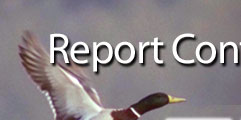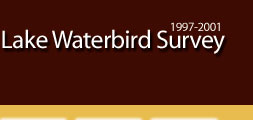 |
 |
 |
||||||||||||
 |
 |
 |
 |
 |
 |
 |
 |
|||||||
|
Preface • Introduction • Study Objectives • Community Participation • Regional, Physical and Ecological Setting Methods • Survey Protocol • Surveyors • Data Compilation • Data Analysis Results • Migration Chronology • Breeding Species • GSL Species Accounts • Species Distribution Discussion • Recommendations • Acknowledgements • Definitions/Abbreviations • Literature Cited Report & Appendices: 1 • 2 • 3 • 4 • 5 • 6 • 7 • 8 21-Year Waterbird Survey Synopsis & Appendices: 1B • 2B • 4B • 5B • 6B • 8B
|
SurveyorsBecause there was not enough professional staff to conduct the surveys, we recruited the assistance of citizen-scientists and avid birders from Audubon chapters, Friends of Great Salt Lake, universities, birding groups, duck clubs, allied State and Federal agencies, and the public at large. Eighty percent of the volunteers had birding and other natural resource field experience. Internal funds of the GSL Ecosystem Project supported three WMAs with a month each of technician time for each of the five years. In addition, the full-time staff from four WMAs carried out surveys on their respective sites or sites nearby. The Bear River Migratory Bird Refuge (MBR) biologists surveyed the 80,000 acre refuge. Other Utah Division of Wildlife Resources (UTDWR) biologists from the Northern Region and the Salt Lake office, and biologists from the United States Fish and Wildlife Service (USFWS) and Bureau of Land Management (BLM) offices cooperated in surveying sites. Often volunteers from other organizations brought field and bird identification skills to the study that were equal to, or exceeded some full-time professionals. There were some volunteers who had some or little skill in bird identification or in estimating large numbers of waterbirds. Often these people gained experience through on the job training, by acting as data scribes, and an extra pair of eyes for survey teams. Project managers organized teams, designating a leader. The team leader was selected based on past years experience, birding skill, and interest in the project or survey area. These people were critical in maintaining consistency in the data collection and in many cases were with the study for the entire five years. Team leaders were responsible for scheduling survey dates among the team and sending in the appropriate data forms. Training was provided for participants prior to the start of the field season each year. A review of the study objectives and methods was discussed in a classroom session, and bird identification was practiced with a slide show presentation. Periodically, participants were asked to take a short bird identification quiz after the review to be used to ascertain skill levels. Data forms, return envelopes, survey protocol, area maps, and official letters of participation were distributed to each team. A second training session in the field focused on survey methodology for a point sample, distance estimation, bird identification, and flock size estimation. During the field season, monthly newsletters were sent out to all participants with announcements, reminders, short data reports, and educational articles. The main objective for the newsletter was to maintain adherence to protocol standards, provide an efficient means of communication from the project coordinators to participants, as well as to create a sense of teamwork and community. As often as possible, articles were included that indicated how the Waterbird Survey (WBS) data were being used on the local and national levels. Participants were encouraged to send in descriptions of interesting survey experiences to share with the others. |